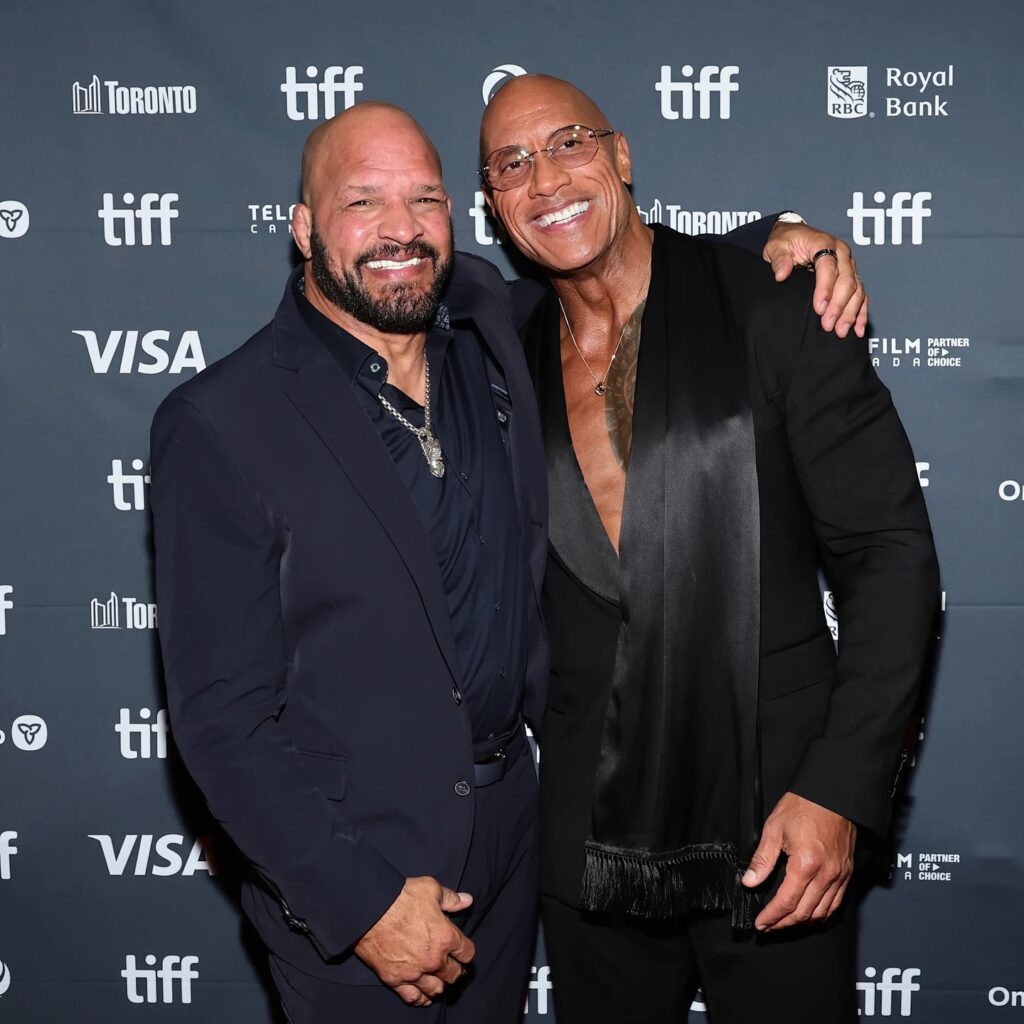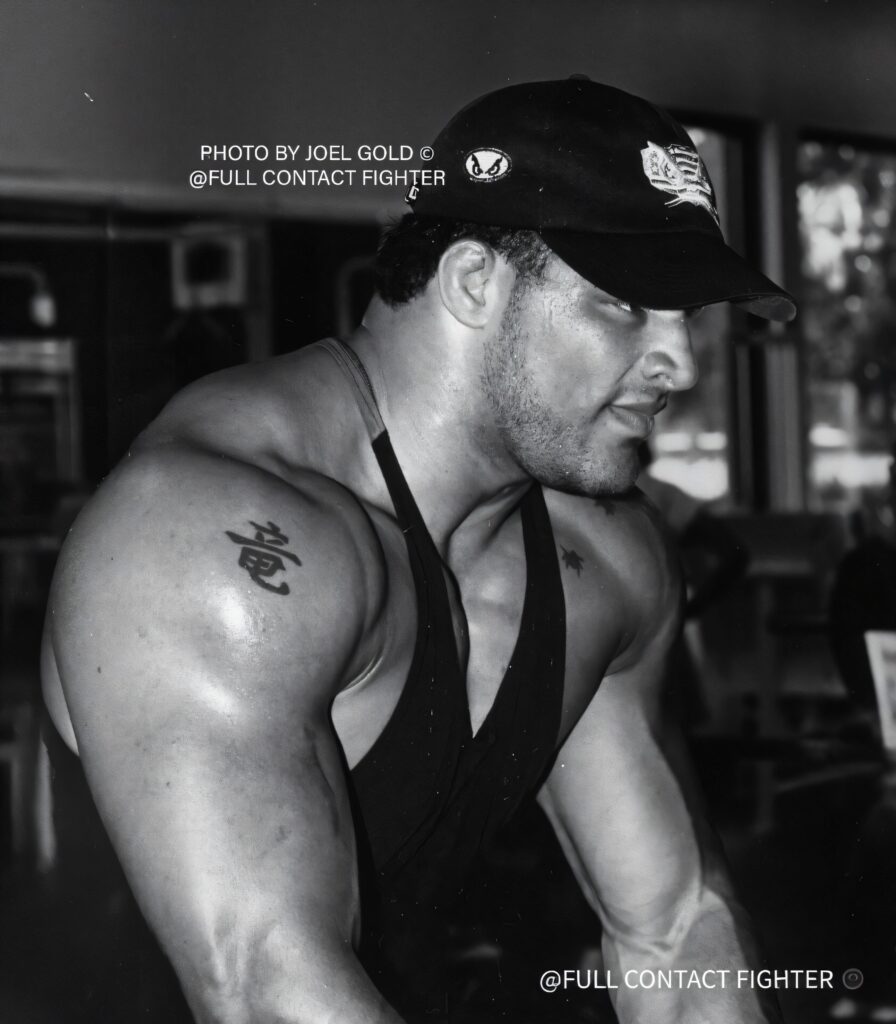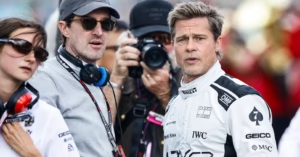
Introduction: Who Is Mark Kerr?
Mark Kerr is a name that echoes across the evolution of mixed martial arts (MMA), wrestling, and combat sports culture.
He’s not just a fighter but a story—a rise, a fall, and a hard-earned transformation.
Known as “The Smashing Machine,” Kerr dominated the late 1990s and early 2000s before the sport of MMA was fully mainstream.
His career spans NCAA Division I wrestling, international accolades in freestyle wrestling, championship runs in early MMA, and a personal journey through pressure, pain, and resilience.
This article explores his life, legacy, techniques, battles in and out of the ring, and why Mark Kerr still matters today.
Early Life and Wrestling Roots
Mark Kerr was born on December 21, 1968, in Toledo, Ohio, where sports were more than pastime—they were identity.
From a young age, he gravitated toward wrestling, a sport that rewards discipline, drilling, and grit.
He learned quickly that wrestling is a game of inches, leverage, and will.
By high school, Kerr had made a name for himself with raw athleticism matched by technical efficiency.
He wasn an ordinary prospect; he was a problem for anyone across the mat.
The Ohio State University and NCAA Glory
Kerr wrestled at Syracuse University and later at Ohio State University, becoming an NCAA Division I champion in 1992 at heavyweight.
His collegiate career was defined by a combination of explosive double-legs, heavy top pressure, and positional mastery.
He brought a methodical intensity to matches, exhausting opponents with relentless pacing and mat control.
College wrestling sharpened his instincts for pressure, balance, and chain wrestling—skills that would later translate brutally well to MMA.
International Freestyle Wrestling
After college, Kerr took his talent to the international level in freestyle wrestling.
He competed in prestigious tournaments, including the World Cup and USA Wrestling events, facing elite heavyweights from powerhouse nations.
Though he didn’t capture Olympic gold, he remained one of the most formidable American heavyweights of his era.
His grappling base would become the cornerstone of his fighting style in MMA.
In every phase, Kerr was the quintessential wrestler—sturdy hips, relentless pressure, and a refusal to concede position.
Transition to MMA: A Natural Fit
The mid-to-late 1990s saw a wave of wrestlers entering MMA as the sport experimented with style vs. style showdowns.
Kerr arrived like a storm.
Armed with elite wrestling, raw power, and surprising agility for his size, he adapted rapidly to the realities of no-holds-barred combat.
His ground-and-pound became a signature, suffocating opponents against the canvas.
He also embraced early grappling systems—adding submissions like kimuras and armlocks to his toolbox.
Battlefields: UFC, PRIDE, and Vale Tudo
Kerr’s early MMA career spanned multiple organizations during their formative years.
He took part in brutal tournaments that demanded multiple fights in a single night, testing toughness and strategy in equal measure.
In the UFC’s earlier formats, his wrestling dominance was unmistakable.
But it was in Japan’s PRIDE Fighting Championships where Mark Kerr became a major attraction.
At PRIDE, he faced a higher caliber of international competition and rapidly built a reputation as a terrifying force in the heavyweight division.
The Smashing Machine Persona
Kerr’s nickname—“The Smashing Machine”—wasn’t accidental; it was earned.
He flattened opponents with takedowns and ground control and rarely gave anyone space to breathe.
A signature style emerged: level change, power double, pressure from half guard, transition to mount or side control, and violent ground-and-pound.
He was innovation by collision—a wrestler adapting in real time to a sport finding itself.
For many fans, Kerr was one of the earliest examples of how dominant a wrestler could be in MMA.
Fighting Style: The Blueprint of Domination
Mark Kerr’s style was built on principles that still define elite MMA heavyweights.
It all started with entries—using feints, fast level changes, and a strong jab to set up takedowns.
His double-leg was explosive, but his chain wrestling kept pressure alive if the first shot was stuffed.
Once on top, Kerr used shoulder pressure and hip control to trap opponents, moving fluidly between half guard and side control.
He timed short elbows and hammer-fists to create openings for submissions or to force referees to stop the fight.
Wrestling to Striking: Ground-and-Pound Efficiency
While not a pure knockout striker on the feet, Kerr’s damage came from positional violence.
He married wrestling control with short-range power—staying safe while inflicting increasing punishment.
This was the blueprint for modern ground-and-pound: safe, heavy, terrifying.
His opponents faded not only from strikes but from the relentless weight of his control.
He understood tempo—the art of slowing a fight down once he had it where he wanted it.
Submissions and Control
Kerr’s submission game was pragmatic rather than flashy.
He favored kimuras, keylocks, and neck cranks from dominant positions.
When opponents turtled, he attacked from behind with patient hooks and heavy hands.
His goal was not to chase the submission but to force it through pressure and fatigue.
That’s classic wrestling logic applied to MMA—secure position, then threaten.
The Human Behind the Fighter
One of the most compelling aspects of Mark Kerr’s story is his humanity.
He wasn’t just an athlete; he was a man under immense expectation.
As “The Smashing Machine,” he became a symbol of dominance, but inside, he wrestled with injuries, stress, and the darker edges of performance culture.
His journey included open struggles with pain management, addiction, and mental health pressures—topics the sport has since become more open about.
His willingness to be vulnerable helped humanize fighters in a way the public hadn’t fully seen before.
The Smashing Machine Documentary: A Candid Portrait
Kerr’s story reached a broader audience through the acclaimed documentary “The Smashing Machine,” which chronicled his rise and the intense pressures he faced.
The film was raw and unfiltered—capturing victories, setbacks, and the emotional toll of elite fighting.
It offered unprecedented access into the cost of greatness for a combat athlete.
It also sparked important conversations about how MMA—and sports in general—support athletes facing addiction and mental health challenges.
The documentary remains one of the most important works in combat sports storytelling.
Relationships, Fame, and Fallout
Elite competition can amplify every part of life, for better or worse.
Kerr’s relationships came under the spotlight, and fame added both opportunity and pressure.
He navigated high expectations from promoters, coaches, and crowds who wanted the unstoppable machine—not the complicated person underneath.
Those conflicting identities created a fault line.
But it also set the stage for growth and reinvention.
Notable Fights and Rivalries
Fans often remember Kerr for dominant wins, but his legacy is also defined by gritty contests against tough veterans.
He battled heavyweights known for striking, grappling, and all-around toughness—this was an era before hyper-specialization, where versatility was survival.
His matches were a laboratory for style integration: wrestling vs. kickboxing, jiu-jitsu vs. top control.
Each bout revealed adjustments—an evolving skillset shaped by the best in the world.
Even in defeat, he gave fans reasons to care.
Tournaments and the Old-School Grind
Before modern fight scheduling, tournaments required multiple bouts in one night.
Kerr thrived in this demanding format, using efficiency to conserve energy while maintaining control.
It was a test of pacing and durability—navigating injuries across several opponents in hours.
These events forged a unique kind of fighter—half strategist, half survivor.
Kerr was built for that challenge.
Lessons from Adversity
As the sport evolved, so did the competition.
Striking defense, submission transitions, and cardio all improved across the board.
Kerr had to adapt in real time against new wave heavyweights with better-rounded games.
These years brought losses—and lessons.
They also reinforced the importance of reinvention in combat sports careers.
Training Philosophy and Work Ethic
Mark Kerr’s training mirrored his fighting: purposeful, punishing, and technical.
He emphasized drilling—the heart of wrestling excellence.
Takedown entries were repeated until they were reflexive.
Ground transitions were practiced with progressive resistance and situational sparring.
He balanced heavy lifting with mobility and recovery when possible, understanding that durability is an asset heavyweight careers depend on.
Wrestling as a Foundation in MMA
Kerr’s career became a case study in the value of wrestling.
Control wins rounds.
Takedowns change momentum.
Top pressure wears down elite strikers.
Even today, champions lean on wrestling as competitive insurance in tight fights.
Kerr helped prove that truth on big stages.
Evolving with the Sport
The Kerr era was a bridge between early MMA and the modern era.
As rules stabilized and training became more systematized, Kerr’s influence persisted through the gyms he inspired and the athletes who studied him.
Coaches still teach his pressure sequences as blueprint material.
There’s a lineage from Kerr’s top control to the tactical dominance seen in today’s heavyweight elite.
In that sense, his legacy lives on in technique, not just memory.
The Mental Game: Pressure, Pain, and Perspective
Combat sports are as psychological as they are physical.
Kerr’s career underscores how mind and body intersect in high-stakes competition.
He fought not just opponents but the expectations surrounding “invincibility.”
That myth can be intoxicating—and destructive.
His openness about vulnerabilities gave other athletes permission to speak up.
Pain Management and Recovery
Fighting at heavyweight is unforgiving.
Injury cycles and short recovery windows can lead athletes into risky decisions.
Kerr’s story highlights the necessity of medical oversight, long-term planning, and support networks.
Today’s fighters benefit from better regulations, sports science, and athlete care.
Kerr’s journey helped spark those conversations.
Identity Beyond the Cage
Eventually, fighters confront life beyond the roar of arenas.
Kerr’s evolution from elite competitor to reflective mentor figure speaks volumes.
He has been part of clinics, appearances, and educational efforts sharing what works—and what to avoid—in a fight career.
That mentorship and humility resonate with up-and-coming athletes.
He’s proof that legacy is bigger than wins and losses.
Cultural Impact and Legacy
Mark Kerr helped define the archetype of the dominant wrestler in MMA’s early days.
His presence in PRIDE and the UFC was a cornerstone of heavyweight storytelling.
The documentary on his life became a cultural artifact—part sports film, part cautionary tale, part redemption arc.
He inspired a generation of wrestlers to consider MMA as a viable path.
And he broadened public understanding of the personal costs behind spectacular performances.
Influence on Modern Heavyweights
Watch contemporary heavyweights who lean on takedowns and top pressure, and you can see the echoes of Kerr.
The sequencing—from level change to smash pass to mounted control—remains viable against the best competition.
He validated the pathway: build a rock-solid base first, then add tools.
It’s a philosophy that still produces champions.
And it started with pioneers like him.
From Myth to Man to Mentor
The story of Mark Kerr follows a classic three-act structure—mythic rise, human crisis, and mature perspective.
He was once the unstoppable force.
Then he became a mirror for the realities of pressure and pain in high-level sport.
Now he stands as a voice reminding athletes to seek balance, care, and long-term thinking.
That arc is what makes his legacy enduring.
Techniques That Defined His Game
It’s one thing to say “wrestling wins.”
It’s another to unpack the details that made Kerr’s wrestling so effective in MMA.
Here are the pillars of his approach.
These aren’t just historical notes—they’re educational.
They show how fundamentals, applied relentlessly, can shape outcomes.
Entries and Level Changes
Kerr used subtle wrist feints and footwork to mask his shots.
He didn’t need long combinations—he needed a window.
Once opponents planted their feet, he dropped levels and drove through hips, finishing with angle cuts.
His timing punished opponents who overcommitted to punches or kicks.
He turned reactive takedowns into offensive momentum.
Top Pressure and Shoulder Control
From half guard, Kerr applied shoulder pressure under the jawline to force head-turns.
This compromised frames and opened pathways to pass.
He relied on heavy hips to pin the near thigh while freeing his knee line.
Once past, he favored side control with a crossface, then trapped near-side arms to remove defenses.
It wasn’t fancy, but it was merciless.
Ground-and-Pound with Purpose
Instead of wild flurries, Kerr threw short, accurate strikes from safe positions.
He mixed elbows and hammer-fists to break posture and force mistakes.
He didn’t chase mounts recklessly; he advanced only when control was certain.
That patience is why his damage accumulated without giving up reversals.
It’s textbook risk management.
What Fans Loved About Mark Kerr
Fans gravitated to Kerr because he was both dominant and compelling.
He had a gladiatorial presence but a human story.
He could erase a fight in minutes—and then speak candidly about fear and fatigue later.
He felt real, not manufactured.
That authenticity made people root for him beyond the scorecards.
The Spectacle of Early MMA
Early MMA had raw edges—ring ropes, soccer kicks, limited gloves, and evolving rules.
Kerr navigated that chaos with a wrestler’s pragmatism.
He didn’t try to out-brawl brawlers; he imposed his game.
Watching him was like watching gravity make decisions.
It was elemental, inevitable, and unforgettable.
A Legacy of Lessons
Kerr’s life offers lessons for athletes and fans alike.
Build your base.
Respect recovery.
Use pressure with patience.
Speak openly when storms come.
And remember: greatness is a journey, not a mask.
Where to Learn More and Explore
If you’re discovering Mark Kerr for the first time, you’re entering a rich piece of MMA history.
You can explore early MMA events, athlete interviews, and technical breakdowns that reference his influence.
You can also find profiles, podcasts, and retrospectives that revisit his career with appreciation and nuance.
For more context on MMA history and evolution, browse trusted platforms that document fight records, rules development, and fighter biographies.
When you’re ready to dive deeper, consider reading about the rise of PRIDE FC, the evolution of heavyweight grappling, and the role of wrestling in MMA strategy.
Useful Starting Points
- Learn about early MMA organizations and rules evolution at resources like official UFC history.
- Explore the background of PRIDE FC and its storied events via archived features on PRIDE.
- For insights into wrestling-to-MMA transitions, check training philosophies discussed in USA Wrestling’s news hub.
- To understand the groundwork of fighter health and recovery, explore sports medicine education.
- For broader context on MMA rules, weight classes, and safety, visit unified rules overviews.
Why Mark Kerr Still Matters
Mark Kerr stands at an intersection of sport, culture, and character.
He’s a reminder that MMA’s early architects were learning in real time—and paying real costs.
He showcased the power of wrestling in a young sport and opened space for honest conversation about mental and physical health.
His triumphs inspired, and his struggles taught.
That combination is why his story keeps resonating with fans and fighters who value both excellence and honesty.
Final Thoughts: The Man, The Machine, The Message
Mark Kerr’s impact goes beyond highlight reels.
He changed how people think about control in combat, how athletes confront pressure, and how fans understand the person behind the performer.
He’s part of MMA’s foundation—a pioneer who showed that dominance can coexist with vulnerability.
His lessons are practical for fighters and profound for anyone navigating high expectations.
In telling and retelling his story, we keep the sport honest—and human.

Also Read: Jennifer Lopez




